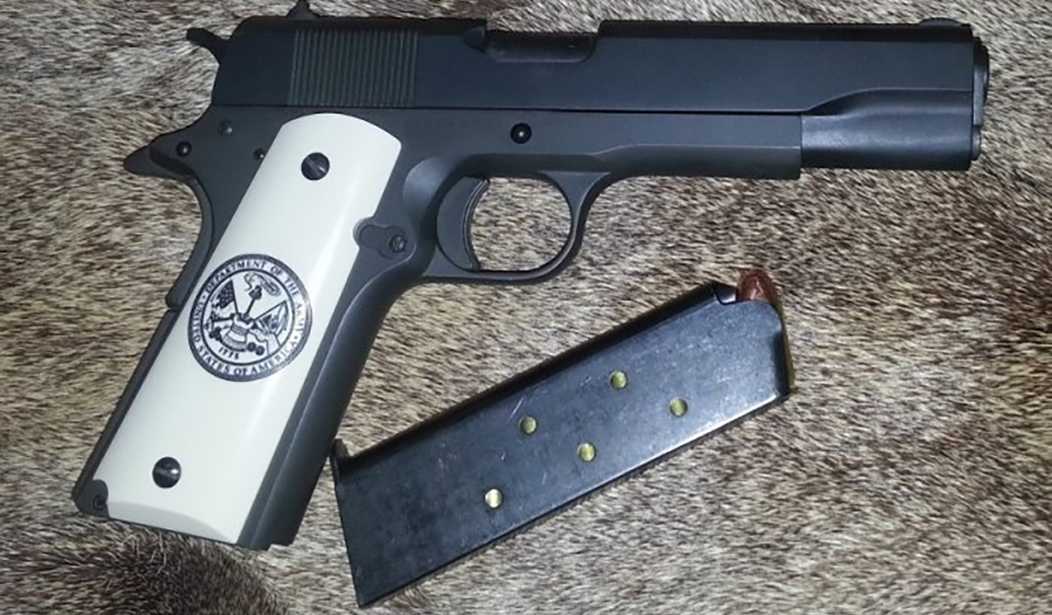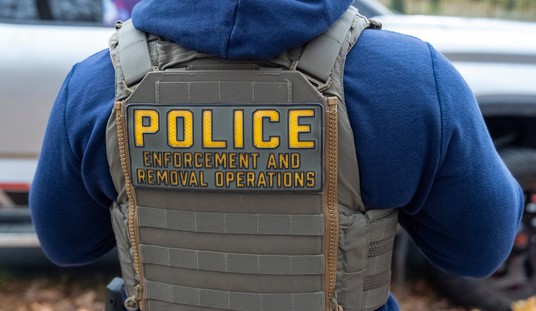Today, February 14th, is Valentine's Day — a Hallmark holiday in which we're supposed to show our loved ones how much we care for them by giving them cards and flowers, hopefully purchased at the local Hallmark store or an accomodating local florist. Yes, I'm a tiny bit cynical about that; you shouldn't need to set aside a special day to show your significant other how important they are to you. You should do that every day.
So, let's set that aside for a moment. Today, as it happens, is a big day in firearms history as well. On February 14th, 1911 — 114 years ago — the United States Patent Office officially published patent US984519A, titled "Mechanisms or systems operated by propellant charge energy for automatically opening the lock recoil-operated the barrel being tilted during recoil." That patent was issued in the name of the DaVinci of firearms, John Moses Browning, and the mechanism in question was the recoil-operation mechanism for what may be the finest martial sidearm ever invented: the Colt-Browning 1911. The safe here contains one, not a Colt but a Rock Island Armory 1911, which is basically a Series 70 Colt in WW2-era 1911A1 style. It’s a no-frills, very basic military-type sidearm with the advantages of being powerful, reasonably accurate, and very reliable.
It's interesting to compare and contrast the 1911 pistol to another sidearm that entered service three years earlier: the P-08 Luger. I have one of those, too, made in Oberndorf by the famous Mauser-Werke in 1934, still carrying the original Nazi proof marks. Whatever you think of the people who carried them, the Luger nevertheless remains one of the most graceful and, yes, beautiful military sidearms ever made. It has lovely lines, the grip shape and angle are near-perfect, and if you bring the arm up in one hand and extend your arm, you find your eye drawn naturally to the sights.
But, oh, those sights! The front blade sight is fine, but the rear sight may as well not be there on the issue P-08; it's barely a notch cut in the pivot of the gun's toggle. The placement of the rear sight on the toggle means that the front and rear sight are on different parts of the gun, one of which moves with every shot. Worst of all, judging by my example, the Luger just isn't very reliable. My copy and other ones I have handled and fired have a penchant for stovepipe jams; mine does it at least once with every magazine, and it's not like the piece was cobbled together from parts. Like a lot of late 19th-century designs, the Luger is made up of many screwy little parts, those parts are all numbered, and all the numbers match.
The 1911, though, can take a licking and keep on ticking. It's not graceful like the Luger; instead, it's solid, slab-sided, robust, and tough. It's a remarkable design, as are most of the Maestro's efforts, and the fact that it remains in wide use today after 114 years speaks volumes. Almost every gun company operating today makes a version of the 1911. It's a remarkable design from a remarkable designer, one that won't be matched any time soon.
See Related: Valentine's Day Morning Minute: For the Love of MAGA, MAHA, and DOGE
Tackle the Trauma of Valentine's Day: University Celebrates Students Repulsed by Romance
Today, though, also marks a much darker day in gun history: it's the 96th anniversary of the infamous St. Valentine's Day Massacre in Chicago, in which seven members of North Side Gang, led by George "Bugs" Moran, were lined up against a wall and gunned down. Two of the gunmen were equipped with Thompson submachineguns, the "Chicago Typewriter," and I'll explain why that's relevant in a moment. The shooters were never positively identified, but Al Capone's operation, the Chicago Outfit, is generally presumed to be responsible. The massacre was an attempt to kill "Bugs" Moran himself, but Moran wasn't among the victims. Only one of the victims survived until the police arrived, that being Frank Gusenberg; he refused to talk and died shortly afterward.
Why are the Thompsons relevant? Because this incident is generally regarded to be one of several that led to the passage of the United States' first major national gun control law, the National Firearms Act of 1934, which placed a hefty (for the time) transfer tax on fully automatic weapons, short-barreled rifles and shotguns, and suppressors. Manufacturers were also hit with an occupational tax. That law remains in effect today.
So, a mixed day in gun history — but I think it's safe to say that the Browning 1911 eclipses the other unfortunate events. So, if you really want to show your loved one how much they matter to you on this day — take them to the range! It's a better use of your time than waiting in line to pay for a bunch of flowers or a shiny card. As for the National Firearms Act, I'll leave you with this quick look at the pre-NFA world.















Join the conversation as a VIP Member